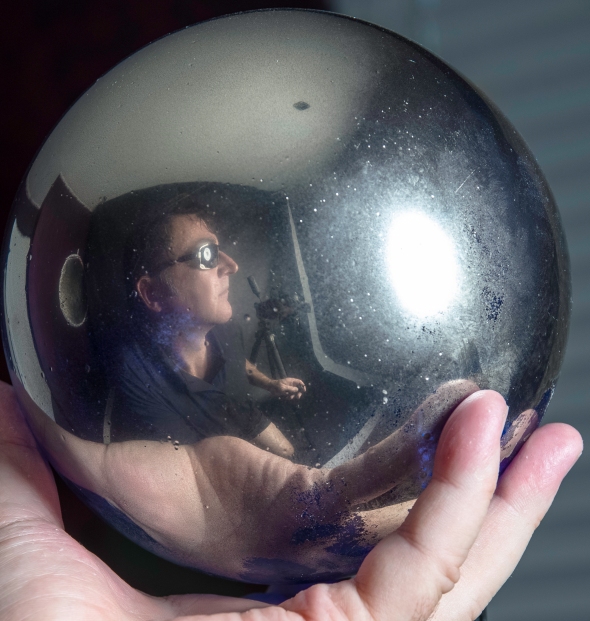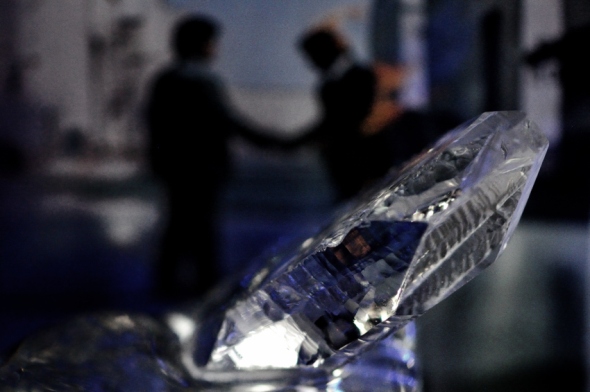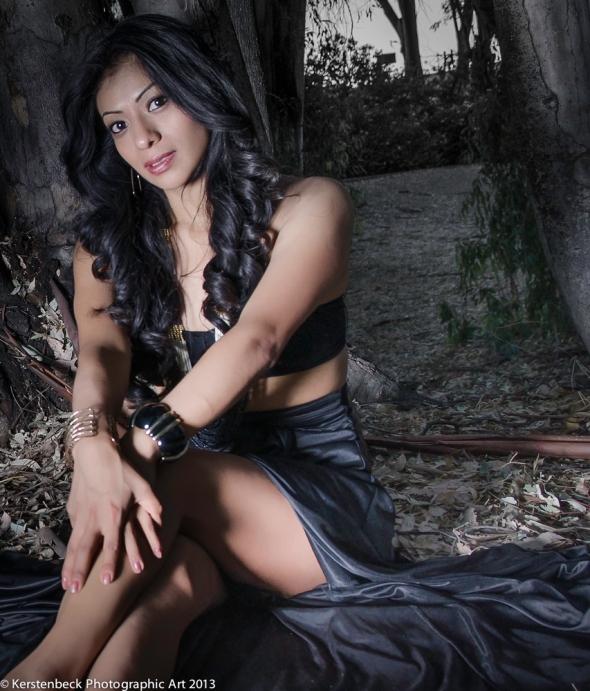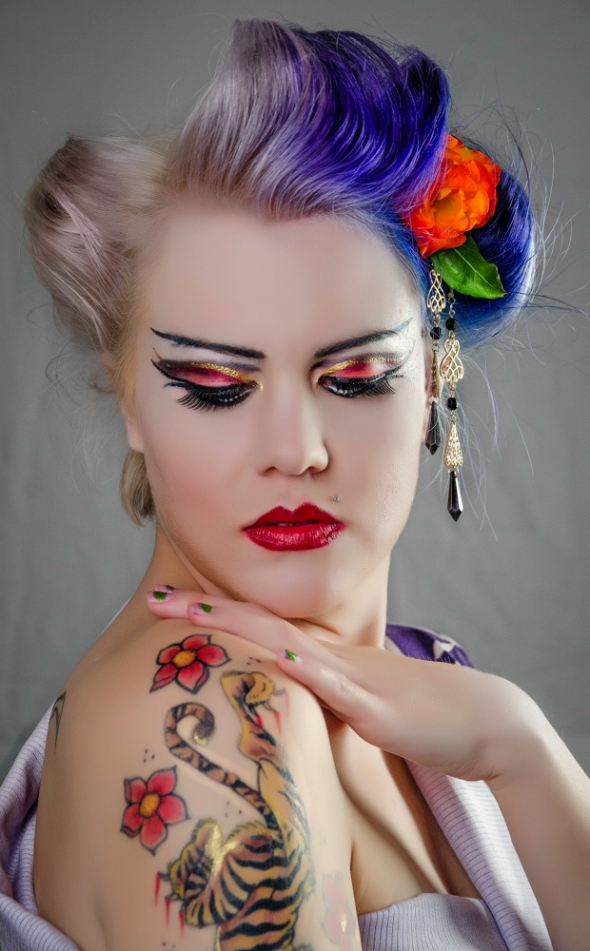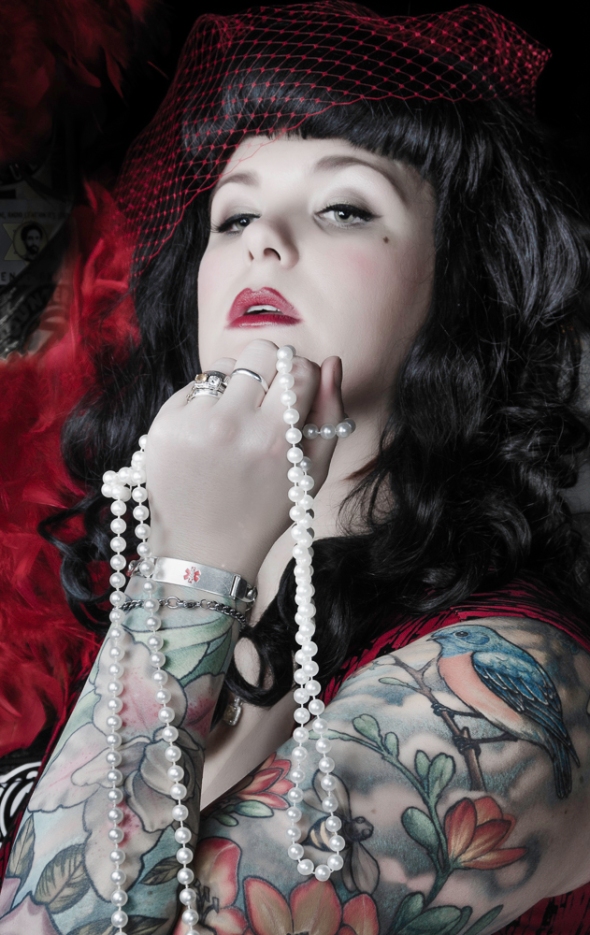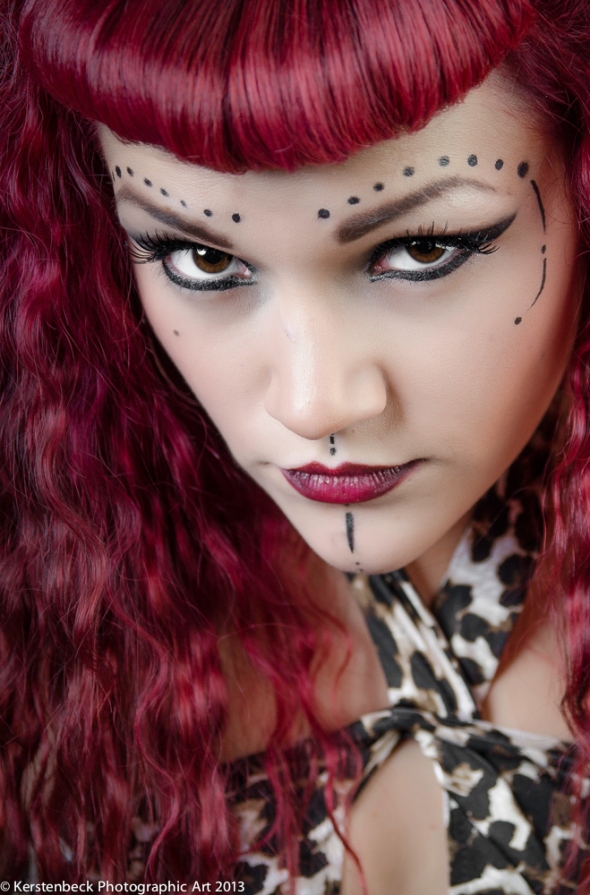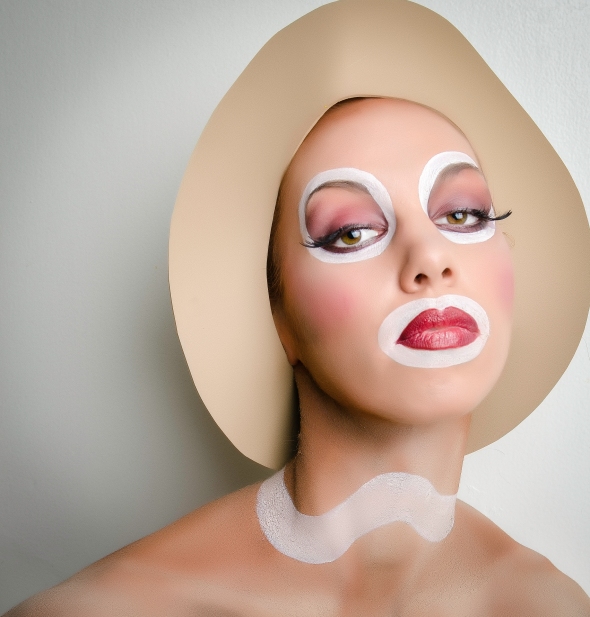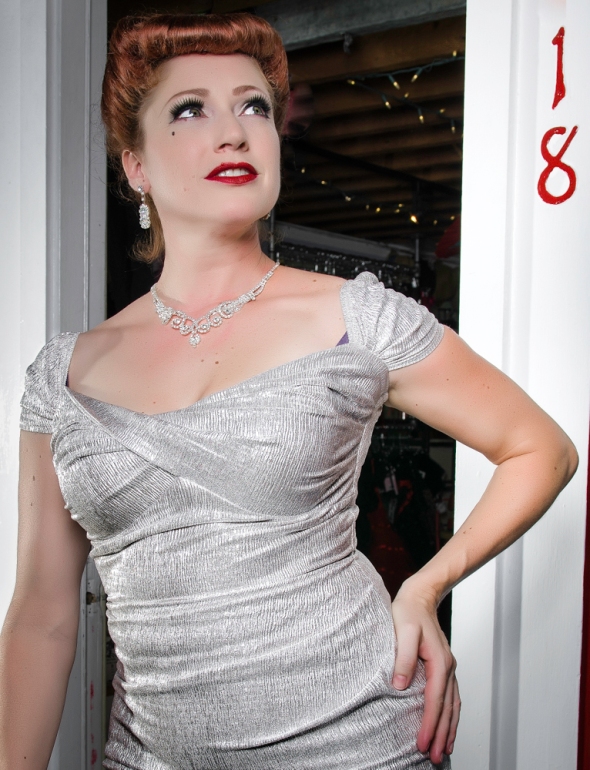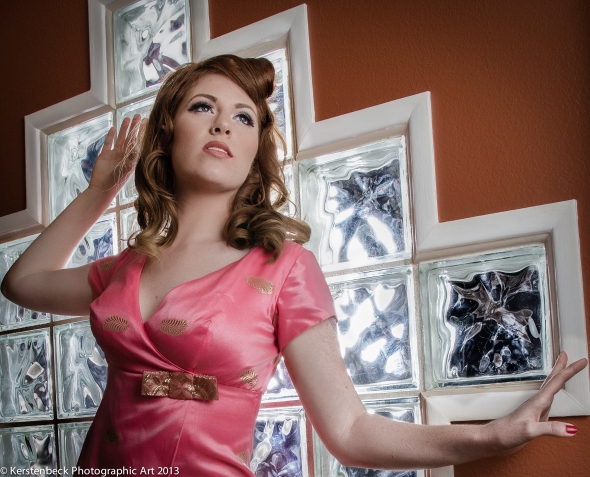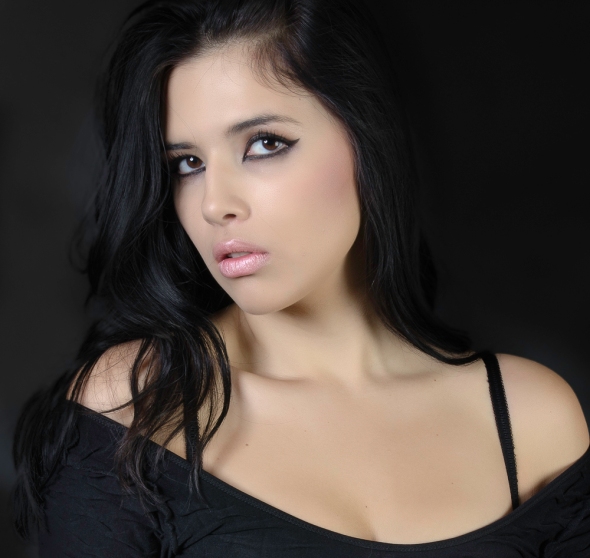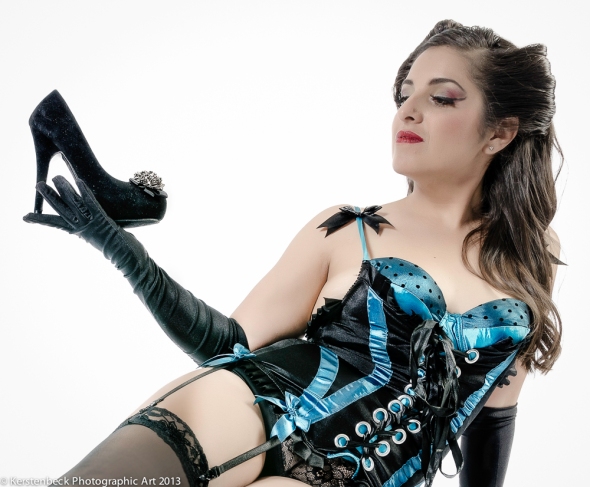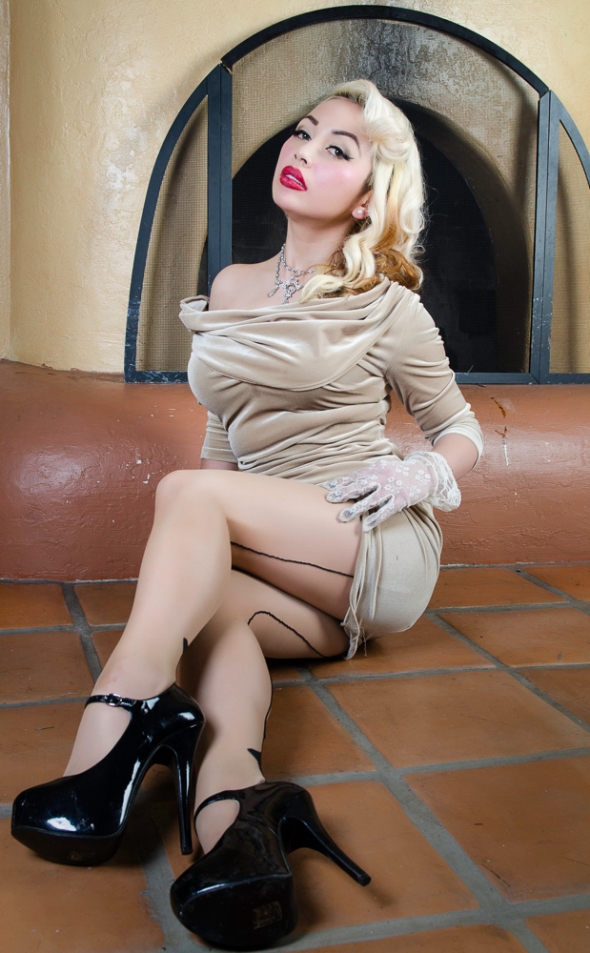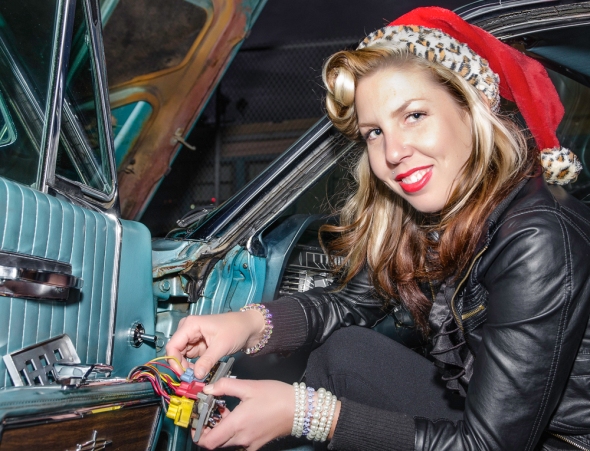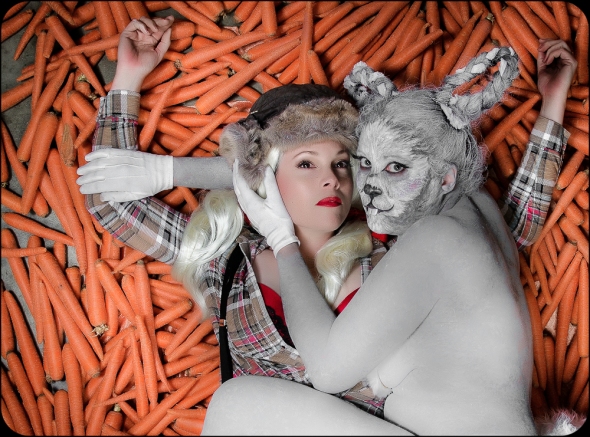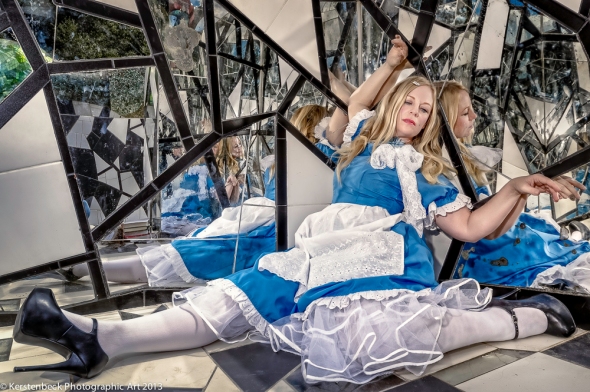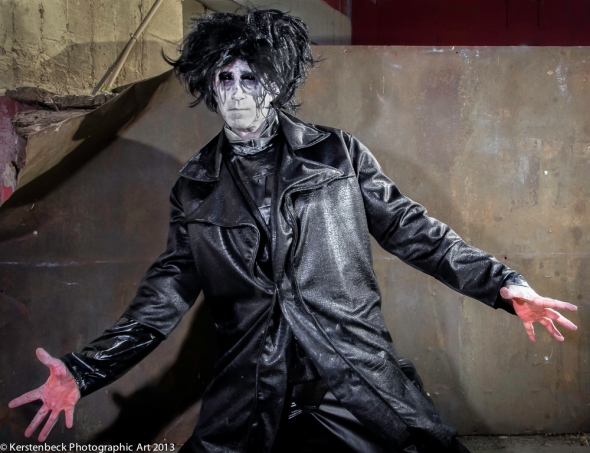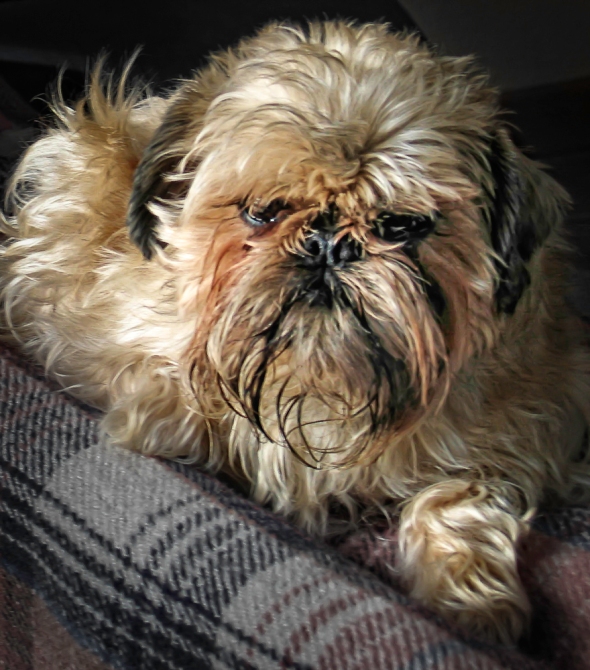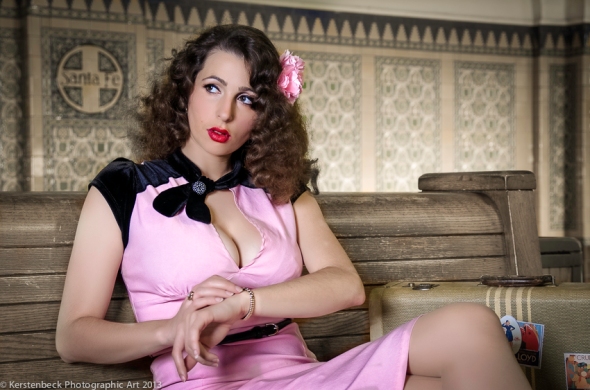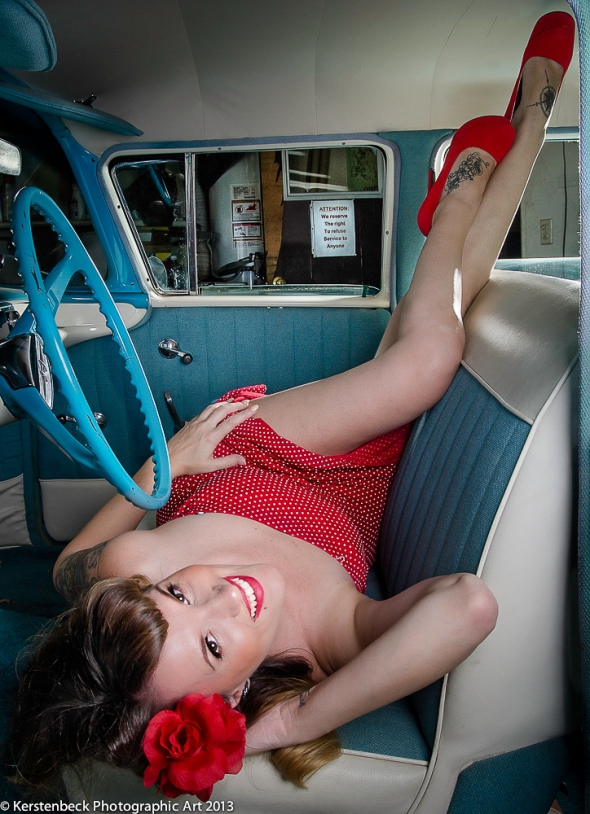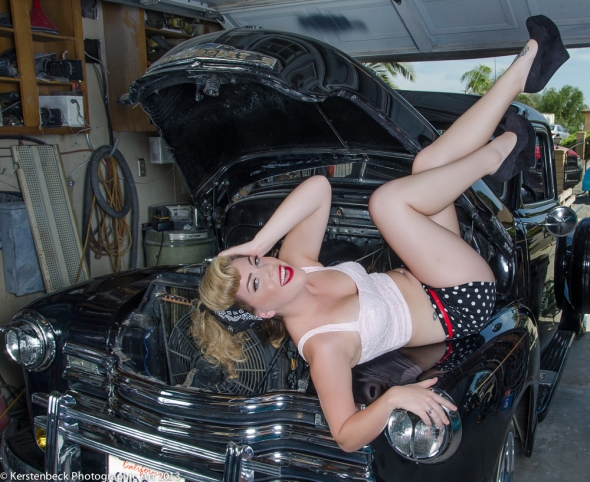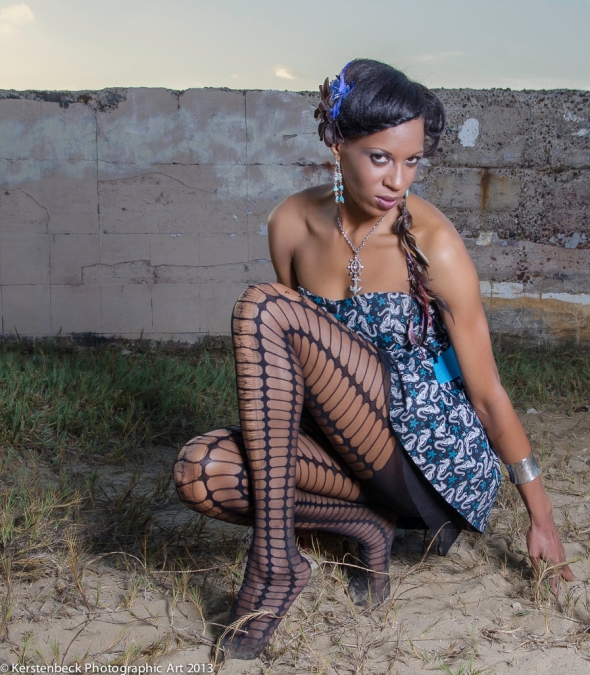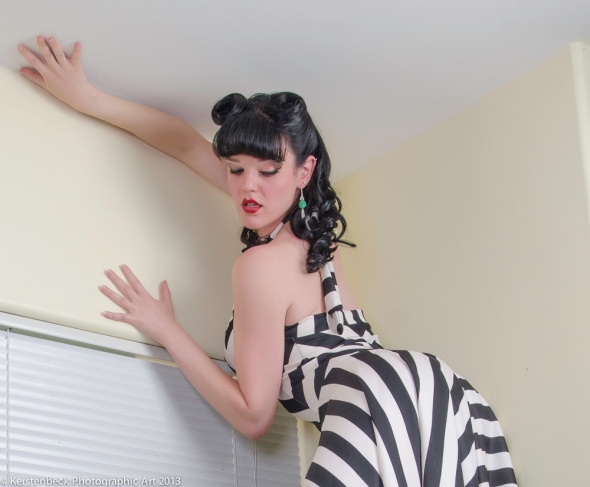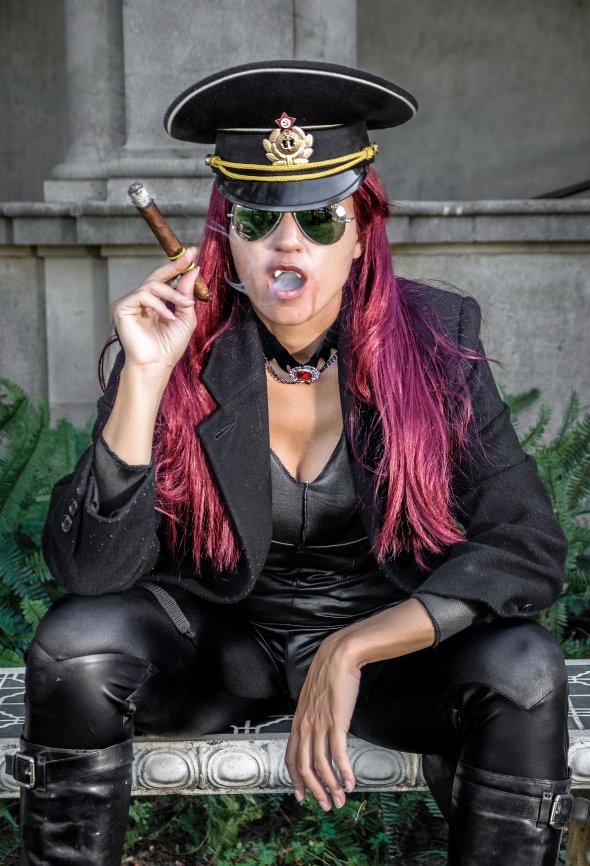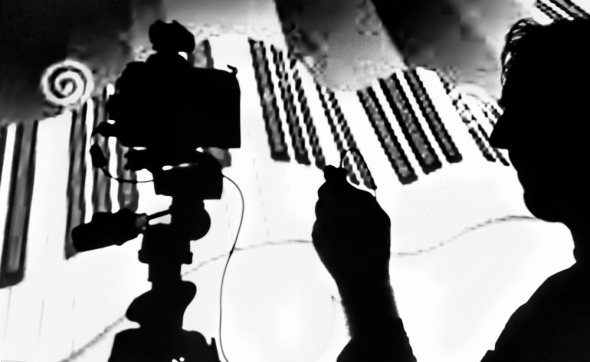Finding a Vision
Vision is seeing the potential purpose hidden in the chaos of the moment, but which could bring to light new possibilities. In our current and probable future environments a certain amount of chaos is inevitable. Often emerging possibilities must be sought out and acted upon before all relevant information is known. Old predictable patterns must be relinquished as comfortable as they seem. For many, this is a terrifying prospect. Vision is seeing what life could be like while dealing with life as it is. Vision deals with those deeper human intangibles that alone give ultimate purpose to life and in the end, vision must always deal with life’s qualities and not with its quantities.
If we wish to be open to new possibilities we also need to be aware of the unexpected ways in which they can surface. Limiting the creative process to officially designated “brainstorm session” we may miss something that may have been there all along, something not visible catching the sun. We must be aware that spontaneous moments of possibility exist, the things that owe cannot touch but know instinctually that they are there.
Take a moment to think about your own experience, core values and what you truly care about in your life. What types of habits, people, things, situations do you gravitate towards and what do you avoid and move away from? Recall your past and identify times where you felt closest to inspiration and vision, and the times you were furthest from it. This should provide a few useful signposts.
In the words of a great German writer, Goethe, “Whatever you can do, or dream you can, begin it! Boldness has genius, power and magic in it. Begin it now”
It all starts with a vision…
Inspirational Leadership… “Shine on you Crazy Diamond”
Hi, Erik again….
I used to Blog every single day for almost three years! Crazy! I have been a Slacker as of late…must get back on the horse that bucked me off!
Anyway, at my other work , I found a book that was discarded like a piece of used snot rag …. I grabbed it! (Wiped off the snot)
It was written by Richard Oliver and it is all about Henry the 5th and interpretations of Shakespeare. It is called “Inspirational Leadership””
“Henry V is Shakespeare’s greatest leader – inspired and inspiring, visionary yet pragmatic, powerful yet responsible. In this fascinating book, acclaimed director and creative consultant Richard Oliver draws on his intimate knowledge of the play, and its absorbing central character, to unmask the secrets of Inspirational Leadership and reveal the timeless lessons it holds for Managers and Leaders today.”
….from the back cover…I am not so eloquent…..such a good find! Here is but a tiny snippet….
“O for a muse of fire, that would ascend
The brightest heaven of invention…
But pardon gentles all
The flat unraised spirits that hath dared
On this unworthily scaffold to bring forth
So great an object….
And let us, ciphers to this great account,
On your imaginary forces work.”
………………………………………………………………………
Thank you so much for visiting my Humble Blog
@ErikKerstenbeck
Friendly Faces

It has been a long time since I have blogged and my Year End Statistics are lame. I used to blog every day, time to get back on the horse! 🙂 2013 was a Roller Coaster of a year for me due to rapidly changing circumstances – perhaps I will discuss at some later time, but not today. Day One 2014 is one for reflection and watching Hockey!
I would simply like to post some pictures of all the wonderful people whom I have met and gotten to know as friends. (Hopefully I don’t miss anyone, and if so please chastise me with a comment or two). They are, for the most part, Artists with their own special talents, troubles, turmoil, but as I have noticed, always positive, smiling and happy (at least when I am Photographing them). So I will write a brief note for each…no particular order, I am not that organized! 🙂
This is Crystal Montes – she is a trooper, runs through mud, climbs anything and likes to make goofy faces!
Dani Kovache introduced me to many wonderful people this year, set up a bunch of fun projects – thanks D
Chary from Temptress Fashion – Thanks Temptress for inviting me to all the special events – always fun
Felina Vie – first real photo shoot with her – it got a bit nuts with the Voodoo Theme 😉 Thanks May for the Makeup work and Daniela too!
Carmel – always willing to try new things, and is an exceptional Burlesque Artist
Lady Borgia – A Temptress Fashion Model, Burlesque Artist and just good people
Eva Mae – a True Southern Belle
Erica Joleen – mysterious creature “Nevermore” 🙂
Veronica from Ramona – her first time doing pin-up, how exciting!
Melanie Monsters – Gave up a lucrative career as a Shrink, Classical Pianist, plays in a Ska Band, Pinup Model…its all about the Music for her *meow meow* 😉
Caitanya Cook – yes she can hot wire a car!
Remele Sparks and Josie Bunny – creatives that will set you back on your heals 🙂 …with 150 lbs of Organic Carrots as props and hours of body painting preparation!
Catherine Madinger – always scheming about new Projects and a fine Lady from Riverside
Dean LeCrone – Chauffer, Creator of Doc Smith Comics and one tough fella – he was so hot in this outfit with temperatures in the high 90s that there were pools of sweat on the ground!
Chewie – RIP my Friend 🙂
Simone Strauss – meticulous self preparation for any project
Gia LaDolce – wowza, a Spanish Doll from SoCal, and her Mom is awesome!
Kitty Von Rose – always smiling and happy
Sandy Summers never needs direction unless you ask her to use a prop that does not make any sense, like a huge spanner to fix a car
Jean – mysterious and strange animal 🙂
Carrol Morrow – legs! Also really fun!
Megan Martine – Model and Ex US Marine …Semper Fi!
And me, Erik Kerstenbeck, Owner of Kerstenbeck Photographic Art from Ramona California, which is close to San Diego. I am an Army of One. I don’t have a Production Crew, Marketing Manager, Sales Team, Social Media Machine and yet I seem to get along just fine. Always learning from peers and like-minded people.
Remarkable things have happened in 2013 and I feel like I am on the cusp of something really special (More details later, don’t want to jinx it)
Thanks so much for the kind visit to my Blog and wish all a healthly, prosperous and Stellar 2014…Erik 🙂
Broken
Heartbreak happens to all of us and can wash over us like the in rushing tide. We are soaked with grief, and the overflow is channeled into the body. Loss becomes a physical emptiness with feelings that often cannot be put into words. The idea of healing can seem so enormous that often we don’t even try for fear of further damage. This leaves an enduring mark upon us and by no means does recognizing that this is not permanent dull its sting for it is the sting itself that stimulates healing. The pain is letting us know that we need to pay attention to our emotional selves, to listen to our feelings and be in them fully. There is a saying that time heals all wounds, and this may be true to some degree. Time tends to dull the pain. Most importantly, open yourself to the possibility of loving, trusting, and believing again. When, someday soon, you emerge from the cushion of your grief, you will see that the universe did not cease to be as you nursed your broken heart. You emerge on the other side of the mending, stronger for all you have experienced.
I discovered this fissure in the rock at Sunset Cliff’s in San Diego during a low tide at sunset. It is quite a challenge to get to the beach from the cliffs above, the final descent is down a 30 embankment where a rope has been secured to assist hardy souls getting up and down – a beginners introduction to rappelling of sorts. Having a hefty Manfrotto Tripod and a pack full of photo gear made this even more fun! The waves were quite vigorous this afternoon and this called for a Neutral Density Filter which allowed a 30 second exposure to smooth things out and capture the many tiny waterfalls. I used a Variable ND from Singh-Ray on a 10-20mm lens. Mounting the tripod on a sturdy rock outcrop stabilized the shot with the tide sweeping around its feet (and mine). There are many such geographical features along the coast of Southern California which emerge during the low tide and will be subject of further exploration in the coming years!
Please have a look to our website http://www.kerstenbeck.com for more scenic landscapes and other gems which would look amazing framed and on your wall!
Thanks so much for the visit!
Transformations
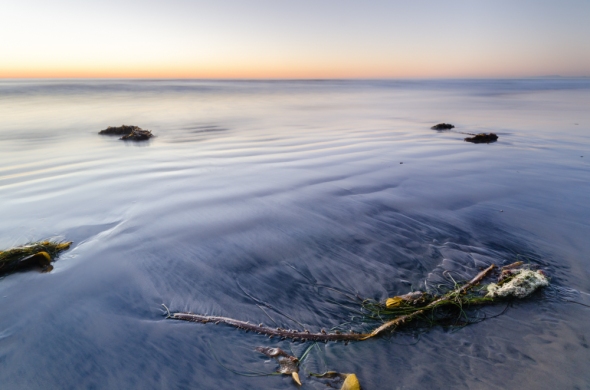
Transformation is a universal constant that affects our lives from the moment we are born until we leave earthly existence behind. At the root of all growth, we find change. Occasionally, change and the circumstances leading up to it are a source of extraordinary joy, but more often than not they provoke feelings of discomfort, fear, or pain. Though many changes are unavoidable, we should not believe that we are subject to the whims of an unpredictable universe. It is our response to those circumstances that will dictate the nature of our experiences. At the heart of every transformation, no matter how chaotic, there is substance. When we no longer resist change and instead regard it as an opportunity to grow, we find that we are far from helpless in the face of it.
Our role as masters of our own destinies is cemented when we choose to make change work in our favor. Yet before we can truly internalize this power, we must accept that we cannot hide from the changes taking place all around us. Existence as we know it will come to an end at one or more points in our lives, making way for some new and perhaps unexpected mode of being. This transformation will take place whether or not we want it to, and so it is up to us to decide whether we will open our eyes to the blessings hidden amidst disorder or close ourselves off from opportunities hiding behind obstacles.
To make change work for you, look constructively at your situation and ask yourself how you can benefit from the transformation that has taken place. As threatening as change can seem, it is often a sign that a new era of your life has begun. If you reevaluate your plans and goals in the days or weeks following a major change, you will discover that you can adapt your ambition to the circumstances before you and even capitalize on these changes. Optimism, enthusiasm, and flexibility will aid you greatly here, as there is nothing to be gained by dwelling on what might have been. Change can hurt in the short-term but, if you are willing to embrace it proactively, its lasting impact will nearly always be physically, spiritually, and intellectually transformative.
This was shot one evening on the beach in Del Mar, California before covering a Press Event for a local Artist. The smooth waves and ripples were achieved by using a very long shutter speed (30 seconds ) and letting the waves wash over the sand. Using a Neutral density filter, the available light was reduced by 6 stops – these filters are great for making silly waterfalls, flowing rivers, musty waves etc. Also, and often overlooked, one can use these filters in strong sunlight to control the exposure to allow portraits to be shot with a wide open aperture. There are many manufacturers of such filters, this one was from Singh-Ray. Lee, B&H and other also make great products – The Big Stopper by Lee is a 10 stop Neutral Density filter, which can allow exposures of several minutes – awesome for moving clouds against fixed foregrounds!
This image is available for purchase on our website http://www.kerstenbeck.com/International/Domestic-Landscape/23603331_JrbKxX#!i=2293421194&k=9X4jJsP&lb=1&s=A
….or just drop by and have a look around!
Gestures of Solace
Sometimes it is difficult to see someone we love struggling, in pain, or hurting. When this happens, we might feel like we need to be proactive and do something to ease their troubles. While others may want our help, it is important to keep in mind that we need to be sensitive to what they truly want in the moment, since it can be all too easy to get carried away and say or do more than is really needed. Allowing ourselves to let go and simply exist in the present with another person may actually provide a greater amount of comfort and support than we could ever imagine.
Perhaps we can think back to a time when we were upset and needed a kind word, hug, or listening ear from someone else. As we remember these times, we might think of the gestures of kindness that were the most healing. It may have been gentle words such as “I care about you,” or the soothing presence of someone holding us and not expecting anything that were the most consoling. When we are able to go back to these times it becomes easier for us to keep in mind that giving advice or saying more than is really necessary is not always reassuring. What is truly comforting for another is not having someone try to fix them or their problems, but to just be there for them.
This shot was taken in Vancouver, British Columbia on a cold,windy and rainy day in October. The statue is located close to the passenger ship terminal in downtown and is really special. To see more of Vancouver or the many other wonderful places we have documented, just click the link and you will be transported to our Website Kerstenbeck Photographic Art
Motion Blur Tutorial
 Using a fast shutter speed will freeze motion in its tracks, and using a slow shutter speed with moving objects will spread the image over time. This creates a sense of motion. There are many methods to achieve this motion blur, such as panning on a moving object, shooting from a moving platform (train, car etc), using the zoom feature while the shutter is open, moving the camera on a still subject, or keeping the camera fixed while the subject is moving.
Using a fast shutter speed will freeze motion in its tracks, and using a slow shutter speed with moving objects will spread the image over time. This creates a sense of motion. There are many methods to achieve this motion blur, such as panning on a moving object, shooting from a moving platform (train, car etc), using the zoom feature while the shutter is open, moving the camera on a still subject, or keeping the camera fixed while the subject is moving.
Here we will focus on the latter….Keeping the camera still while using a slow shutter speed will generate a blurring of the moving objects giving a sense of speed. Slowing the shutter even further may exaggerate this and tend towards the abstract. Blur is nice, but keep in mind the basics of composition for all the objects that are not in motion, such as buildings, street signs with the Rule of Thirds in mind. Remember, you are trying to convey a story and not just execute a technique. Imagine the lights as a river and compose the flow as if it were a landscape photograph. Look for low angles, and perhaps use a wide-angle lens to exaggerate the motion as the subjects pass through the frame.
I have found that traffic is a great place to start and especially in an Urban environment. Shooting just after sunset provides just the right balance between ambient light and the ability to catch the oncoming or receding lights. When it gets darker, lights become highly saturated and non-moving objects a bit more difficult to expose properly.If you have time, check out the traffic patterns before it gets dark and take a couple of test shots to check your composition. Also, try to get as close to the traffic as possible by looking for traffic islands or other vantage points. This will save some frustration later once you want to execute your shot. Look for some other vantage points as well, so you can quickly relocate if you are not satisfied with your first results.
The Set Up: You will need to have a camera that allows control over Aperture and Shutter speeds, or even better a DSLR that you can set to Manual. A good sturdy tripod will help to avoid any unintentional camera movement when the shutter is open to keep the non-moving objects crisp. You can also weight down the tripod with you camera bag hanging it from the center hook to further stabilize it. Using a remote shutter release helps as you will not even have to touch the camera, but if you donât have one, use a self timer on your camera after you have composed and see the shot emerging.Some DSLRs allow a Live View from the back LCD display. This allows you to have a bigger view, but more importantly, locks up the mirror for less shake when you trigger the shutter. If you have a lens hood, use it to avoid unwanted light intrusion.
The Camera Settings: How slow is too slow? It depends on the light and the speed of the subjects. Try a shutter speed of between 3 and 10 seconds and start with an aperture settings of f8 to f16. If you like the blur but it is too dark, open your aperture and take another shot. If the exposure is right, but not much blur, slow down the shutter and compensate with a smaller aperture. I always shoot in RAW, so I can make some adjustments later with my post processing software. Keep your ISO settings low (100) to avoid noise. Also look at the scene and try to judge the temperature of the light. Is it mostly incandescent, neon, sodium vapor and try a few test shots to adjust your White Balance. Often it can be a mix, so some experimentation might be in order.
Click on the Image to jump to our Photo Website other examples of this technique and for more Free Tutorials and cool Images for purchase or just to have a look around!
In the blink of an eye
In a blink of an eye, a lot can happen. A lot of astonishing things happen in a split second, but they are moving too quickly for us to see. High speed photography is the art of recording just such events.
Depending on the event to be photographed, methods range from use of ultra-short time flash exposures to producing lots of exposures in a split-second, using for example, a strobe light, or a more exotic sound triggered system (useful for popping balloons, gunshot punctures and the like). A typical camera flash lasts around a few thousandth of a second which is easily quick enough to freeze most anything. The speed of the camera’s shutter is not really that important provided it is open when the flashes fire – synchronizing the camera shutter opening with the flash firing is the key…as well as deciding when to trip the shutter itself.
In this series of pictures, I constructed a setup in my studio which consisted of an aquarium, two inexpensive speed light flashes, wireless flash triggers, black muslin backdrop, DSLR on a sturdy tripod and various veggies and fruits. I filled the tank brimming with water and set one flash above the surface pointing down and the other below the surface pointing in. The tripod mounted camera (Nikon D7000, 17-70mm lens, ISO100, f18, 1/250sec) was in front of the tank and equipped with a wireless transmitter that would trigger the flashes when the shutter was tripped. The veggies and fruit were dropped from various heights depending on their size and density – I found that limes descend much faster than bell peppers, eggs and coconuts being the speediest.
The lighting angles and intensities of the flashes were adjusted periodically. One should also use a plastic zip-lock bag over the flash units, have plenty of paper towels at hand and check the camera lens after every drop – this technique can be a trifle wet! I also discovered that eggs are super fast and tend to crack upon impact on the bottom of the tank and other materials, such as yogurt just make an awful mess and cloud the water. I was contemplating dropping my small dog in the tank, but he quickly caught wind of my thoughts and beat it out of the studio!
Dances with Light
As Photographers we are constantly in search of realizing our vision and inspirations through the media of digital/film imagining. Once we set forth, we then attempt to craft this vision using our tools at hand and with the light which is available. After all, the definition of Photography is the art or process of producing images by the action of radiant energy on a sensitive surface such as film or a CCD (Charge Coupled Device, or Sensor). Sometimes we need to create our own lighting conditions to augment what nature has gifted us with for that moment in time or we use multiple exposures to gather more light than what the sensor can handle in one shot and later combine the images into one, closer mimicking what our eyes can perceive. The Greek definition of Photography is “Painting with Light” – I think this is astute and very appropriate when we begin to use studio lighting. Arguably, our most versatile light source still remain The Sun – it arrives on the job on a regular basis and so far, has not been late to work! Nature is so powerful that capturing its essence is not easy (people, places or things). Our work as Photographers become a dance with light….it takes us to a place within ourselves.
This shot was taken in Pacific Beach, California. We had just completed a shoot underneath the magnificent Crystal Pier as the sun was setting, some long exposures for smooth seas, HDR (High Dynamic Range) imaging to bring the shadows to light, and began to pack up our gear. Walking along the beach, I noticed some Kelp that seemed to have a light of its own. Three shots were taken at different exposure values to grab all the light as the sun was setting (Equipment: Nikon D90, 10-20mm, Tripod, Remote shutter release) – in this case it was the sun that was doing the painting with light, our job was just to bring it to you!
PS One of our visitors asked how we managed to get almost everything in focus. Here is an article about Understanding your Camera’s Hyperfocal Distance
http://www.cambridgeincolour.com/tutorials/hyperfocal-distance.htm
From the Islands
So this week I am away on business in Hawaii- so far each & every day has been so filled that I have not had a single moment to take the camera out of the bag and capture the beauty of this place. I have had time to check out a few key spots for later in the week when the opportunity should be perfect- but in the meantime- I thought you all might like a replay of one of my favorite places in Maui. Erik captured this shot while the waves were crashing all around him trying to keep from falling on the rocks everywhere. For me, I was relaxing, listening to the waves- watching the sun slowly set after island hopping to Oahu and back for a pre-inspection for the conference we are at right now.
I want to extend out to the members of HAIP a simple word that wraps this entire week up so far- – “Po’okela!” Which means, Excellence!
Boudoir Part 8 : Complex Light
This behind the scenes shot demonstrates the gear involved with a shoot. Here we wanted to conserve the Rembrandt Light on our model and get High Key Back Light. The concept was to get a bit Hollywood into the shot – like Runway Photographers. The background flare comes from a bank of portable Speedlights. The main light is from a large soft box. To get the Rembrandt Lighting one only needs to direct the model’s nose position to look to or away from the light. Here is a shot of the setup.
Studio set ups do not need to be expensive or overly complex. One does not need to invest hundreds of dollars for Nikon or Cannon TTL Sppedlights – you can buy older models for a fraction of the price and not have to worry about when you drop them. We have broken several expensive Nikon SB600 Speedlights through incidental damage. An old Vivitar does the job just as well. The only other tools one needs is some light stands, perhaps a few light modifiers like umbrellas and most importantly, radio triggers to control the lights. If you shop around, all of this gear is really not that expensive.
The fun part is learning how all of this works with your camera, lots of trial and error and learning to see the light.
Thanks for the visit to our Blog – we really appreciate it!
Old Number 4
This is a shot of a rusty hub of an ancient wheel. I like the macro and selective focus of this image. I was looking for an Old Nunber 7, so I could relate a cool Jack Daniels Story, now I must only relate some curious Math Facts about the incredible Four!
Four is the smallest composite number, its proper divisors being 1 and 2. Four is also a highly composite number. The next highly composite number is 6.
Four is the second square number, the second centered triangle number. Four is the smallest squared prime and the only even number in this form. It has an aliquot sum of 3 which is itself prime. The aliquot sequence of 4 has 4 members (4, 3, 1, 0) and is accordingly the first member of the 3-aliquot tree.
Only one number has an aliquot sum of 4 and that is squared prime 9. The prime factorization of four is two times two. OK, enough already! www.kerstenbeck.com
“If you believe that, I have a Bridge to sell you”
This was the original shot I was trying to execute before “Pete” jumped in the way with his sign! (See previous post)
References to “Selling the Brooklyn Bridge” abound in American culture, sometimes as examples of rural gullibility but more often in connection with an idea that strains credulity. At the time the bridge was built, the aerodynamics of bridge building had not been worked out. Bridges were not tested in wind tunnels until the 1950s—well after the collapse of the original Tacoma Narrows Bridge (Galloping Gertie) in 1940. (This was shown to us in University as a lesson of miscalculation, I just liked the way it was oscillatiing – perhaps this drove me to the Electrical Engineering side instead of Civil?)
It is therefore fortunate that the open truss structure supporting the deck is by its nature less subject to aerodynamic problems. Roebling designed a bridge and truss system that was six times as strong as he thought it needed to be. Because of this, the Brooklyn Bridge is still standing when many of the bridges built around the same time have vanished into history and been replaced.
This is also in spite of the substitution of inferior quality wire in the cabling supplied by the contractor J. Lloyd Haigh – by the time it was discovered, it was too late to replace the cabling that had already been constructed. Roebling determined that the poorer wire would leave the bridge four rather than six times as strong as necessary, so it was eventually allowed to stand, with the addition of 250 cables. Diagonal cables were installed from the towers to the deck, intended to stiffen the bridge. They turned out to be unnecessary, but were kept for their distinctive beauty. www.kerstenbeck.com
That’s Amore!
This shot was taken during our walk from Brooklyn to Manhattan after the BEST Pizza ever at Grimaldi’s. Ok, here’s the story!
A pop cultural phenomenon that has turned an Italian bridge into a locksmith’s paradise has jumped across the Atlantic and is threatening to cover the Brooklyn Bridge in lovers’ padlocks.
The tradition of securing a symbol of amore to a bridge — and tossing the keys into the river below — dates back to a 1992 book by sugary Italian novelist Federico Moccia, but the tradition didn’t take off until the movie version of “Tre Metri Sopra il Cielo” came out in 2004.
That’s when Roman authorities suddenly had to deal with thousands of lovers clipping all manner of Master, Kryptonite and Medco locks to the Ponte Milvio — and throwing the keys into the muddy Tiber. Well, guess what, Brooklynites: the tradition is here!
Urban Reflections
This was taken after a visit to NYC’s most amazing Camera store, B&H while strolling back to Times Square.
Another bit of History: The general atmosphere of Time’s Square changed with the onset of the Great Depression in the 1930s. Times Square acquired a reputation as a dangerous neighborhood in the following decades. From the 1960s to the early 1990s, the seediness of the area, especially due its go-go bars, sex shops, and adult theaters, became an infamous symbol of the city’s decline.
In the 1980s, a commercial building boom began in the western parts of the Midtown as part of a long-term development plan developed under Mayor Ed Koch. In the mid-1990s, Mayor Rudolph Giuliani (1994–2002) led an effort to “clean up” the area, increasing security, closing porno theaters, pressuring drug dealers to relocate, and opening more tourist-friendly attractions and upscale establishments. Advocates of the remodeling claim that the neighborhood is safer and cleaner. Detractors have countered that the changes have homogenized or “Disneyfied” the character of Times Square and have unfairly targeted lower-income New Yorkers from nearby neighborhoods such as Hell’s Kitchen. www.kerstenbeck.com
Money Never Sleeps
After superb lunch at Grimaldi’s Coal Fired Pizza in Brooklyn (easily one of the best pies ever) and a stroll across The Brooklyn Bridge, we ended up on Wall Street where we encountered the usual craziness. This time a random singer and a passionate Preacher, and Police in riot gear.
This is dedicated to the 1987 movie, Wall Street which starred Micheal Douglas, Tamara Tunie and our current bad boy, Charlie Sheen.
As you may recall, a young and impatient stockbroker is willing to do anything to get to the top, including trading on illegal inside information taken through a ruthless and greedy corporate raider who takes the youth under his wing. I am still partial to this version compared to the 2010 version which just, in my opinion, had a very contrived ending. www.kerstenbeck.com
Gateway to Millions
This is a shot of NYC’s Grand Central Station – surprisingly the No-Tripod Police were nowhere in sight.
There are two peculiarities to this ceiling: the sky is backwards, and the stars are slightly displaced. One explanation is that the constellations are backwards because the ceiling is based on a medieval manuscript that visualized the sky as it would look to God from outside the celestial sphere. According to this explanation, since the celestial sphere is an abstraction (stars are not all at equal distances from Earth), this view does not correspond to the actual view from anywhere in the universe. The stars are displaced because the manuscript showed a (reflected) view of the sky in the Middle Ages, and since then the stars shifted due to precession of the equinoxes. Most people, however, simply think that the image was reversed by accident.
When the embarrassed Vanderbilt Family learned the ceiling was painted backwards, they maintained that the ceiling reflected God’s view of the sky.
There is a small dark circle in the midst of the stars right above the image of Pisces. In a 1957 attempt to counteract feelings of insecurity spawned by the Soviet launch of Sputnik, Grand Central’s Main Concourse played host to an American Redstone missile. With no other way to erect the missile, the hole was cut so the rocket could be lifted into place. Historical Preservation dictated that this hole remain (as opposed to being repaired) as a testament to the many uses of the Terminal over the years. www.kerstenbeck.com
Follow The Light
This was shot inside St. John’s Cathedral in NYC. There are no rstrictions on Tripods here, other than to respect the Patrons who are praying. What is interesting about this shot is the camera White Balance (pls email us if you would like a short description on this White Balance thing). I had set it for Incandescent for the lights above the pews, and the result for the natural sunlight from the Rosarie is blue. This is a three shot High Dynamic Range (HDR) image.
The building as it appears today conforms primarily to a second design campaign from the prolific Gothic Revival architect Ralph Adams Cram of the Boston firm Cram, Goodhue, and Ferguson. Without slavishly copying any one historical model, and without compromising its authentic stone-on-stone construction by using modern steel girders, Saint John the Divine is a refined exercise in the 13th century High Gothic style of northern France. The Cathedral is almost exactly two football fields in length (601 feet or 186 meters) and the nave ceiling reaches 124 feet (37.7 meters) high. It is the longest Gothic nave in the world, at 230 feet. Seven chapels radiating from the ambulatory behind the choir are each in a distinctive nationalistic style, some of them borrowing from outside the gothic vocabulary. Known as the “Chapels of the Tongues” (Ansgar, Boniface, Columba, Savior, Martin, Ambrose and James), their designs are meant to represent each of the seven most prominent ethnic groups to first immigrate to New York City upon the opening of Ellis Island in 1892 (the same year the Cathedral began construction).
Waiting For You
This shot is a tribute to all the Millitary couples who wait for their significant others to come home…often one can see Navy ships disappear over the horizon here…and then later reappear…emotions run deep both times! Taken from Coronado looking NNW
San Diego harbor holds one of the largest naval fleets in the world. This has become the largest concentration of Naval facilities in the world due to US base reductions and retrenchment of the Russian naval base in Vladivostok. Two of the U.S. Navy’s Nimitz class Supercarriers, five amphibious assault ships, several Los Angeles class “fast attack” submarines, the Hospital Ship USNS Mercy , carrier and submarine tenders, destroyers, cruisers, frigates, and many smaller ships are home-ported here.
